#PlanetaryDefense
Explore tagged Tumblr posts
Text
NASA's 5th Biennial Asteroid Threat Exercise: Safeguarding the Planet
Representatives from NASA, FEMA, and the planetary defense community participate in the fifth Planetary Defense Interagency Tabletop Exercise on April 2 and 3, 2024, to discuss the nation’s ability to respond effectively to the threat of a potentially hazardous asteroid or comet. Credits: NASA/JHU-APL/Ed Whitman NASA, the renowned space agency, recently hosted the fifth biennial Planetary…

View On WordPress
0 notes
Text
Laser Starship will stop Asteroidea’s?
I’m sure you have heard about the life-threatening encounters the Earth has every year. Luckily, most of the encounters don’t impact the lives of average humans. How long will your luck hold out??? The next video shows how useful the SpaceX Starship could be if or after it reaches orbit regularly. America’s NEW Space Laser Weapon that shouldn’t be so new? I start the above video mid-way, when…

View On WordPress
0 notes
Text

China's observatories capture images of falling near-Earth asteroid
Several observatories in China have captured rare images of a falling near-Earth asteroid, formally designated as 2024 XA1.
The images, along with the observation results of foreign observatories on the asteroid, mark the 11th successful early warning of an asteroid impacting Earth, and the fourth such prediction of 2024, according to China Science Daily on Friday.
The asteroid has an estimated diameter of between 75 centimeters and one meter. It was first discovered by a University of Arizona telescope at 5:55 a.m. (UTC) on December 3, the report said.
China played a crucial role in monitoring the event due to its strategic geographic location.
The Lijiang branch of the Yunnan Observatories under the Chinese Academy of Sciences (CAS) detected the asteroid during the time from 3:10 p.m. to 3:30 p.m. (UTC) on December 3 through its Lijiang 2.4-meter telescope, said Zhang Xiliang, a researcher at the Lijiang observatory.
At 4:15 p.m. (UTC) on December 3, the asteroid entered Earth's atmosphere over eastern Siberia and ignited, creating a bright fireball. The time between when the asteroid was first detected and its fall to Earth was less than 12 hours.
#NearEarthAsteroid #ChinaSpace#SpaceExploration#AsteroidTracking#PlanetaryDefense
#Astronomy#SpaceInnovation#NEAImages#AsteroidMonitoring#GlobalAstronomy#SpaceScience
International Young Scientist Awards
Website link: youngscientistawards.com
Nomination Link: https://youngscientistawards.com/award-nomination/?ecategory=Awards&rcategory=Awardee
Contact Us: [email protected] _________________________________________________________________________________________________________
Social Media:
Twitter : https://twitter.com/youngsc06963908
Linkedin- : https://www.linkedin.com/in/shravya-r...
Pinterest : https://in.pinterest.com/youngscienti...
Blog : https://youngscientistaward.blogspot....
Tumblr : https://www.tumblr.com/blog/shravya9v
0 notes
Text
#PONCH#TommyFury#BillJoyce#StormDarragh#Jose#148K#BandcampFriday#DarrenTill#Farage#109K#VillaVWestHam#Campbell#72K#Romania#41K#AbuDhabiGP#89K#LetsBOOST#JoinSeason1#TheBoost#74K#Owen#14K#Lowry#Bromley#Nuclear#69K#FridayVibes#Khan#219K
0 notes
Text
youtube
NASA's Asteroid Crash: What They Didn't Tell You! Prepare to delve into the thrilling world of planetary defense as we uncover the hidden truths behind NASA's Asteroid Crash mission and what they didn't tell you! Immerse yourself in the high-stakes science of cosmic billiards, where NASA's DART mission crashed into the asteroid Dimorphos, showcasing our newfound ability to alter the course of celestial bodies. But the story doesn't end there. Join us as we unravel the mysteries with the European Space Agency's Hera mission, embarking on a voyage to analyze the aftermath of this groundbreaking impact. Discover how cutting-edge technology, from high-resolution cameras to mini-cubesats, aims to uncover the secrets of asteroid composition, akin to a cosmic crime scene investigation. This mission is a testament to international collaboration and the enduring human spirit to protect our planet. Celebrate the strides in space exploration and join the conversation—leave comments and share your thoughts on whether we're truly prepared for the next asteroid threat. Stay curious, and let's embark on this cosmic adventure together! #asteroidprevention #spacesafety #impactevents #doubleasteroidredirectiontest(dart)mission #asteroidimpactavoidance #cosmiccollision #spacehazards #internationalspacemissions #planetarydefense #nasa CHAPTERS: 00:00 - Introducing the cosmic case file 00:40 - What is Hera: Overview of Hera Mission 01:35 - Hera’s mission: Objectives and Goals 03:00 - Hera’s little detour: Unexpected Journey 03:45 - Hera’s little helpers: Supporting Technology 04:35 - Why does Hera care about minerals: Importance of Minerals 05:25 - The bigger picture: Asteroid Defense Strategy 07:00 - How do we actually deflect asteroids: Techniques for Deflection 08:15 - Key takeaways: Summary of Insights 09:50 - The $1,000,000 question: Critical Challenges 10:59 - Wrapping up: Conclusion and Final Thoughts 11:35 - Your thoughts: Audience Feedback Subscribe👇: https://sub.dnpl.us/AANEWS/ - Want some Great Buys check out our List: https://bestbuys.vista.page/ - All our links (including those to help with editing): https://sleek.bio/aanews69 - Our Patreon (Great Deal) https://www.patreon.com/DNPLServices - #aanews, #aanews69, #news,
1 note
·
View note
Text
Sci-Fi 5: A Close Call with US19720810 - August 10, 1972
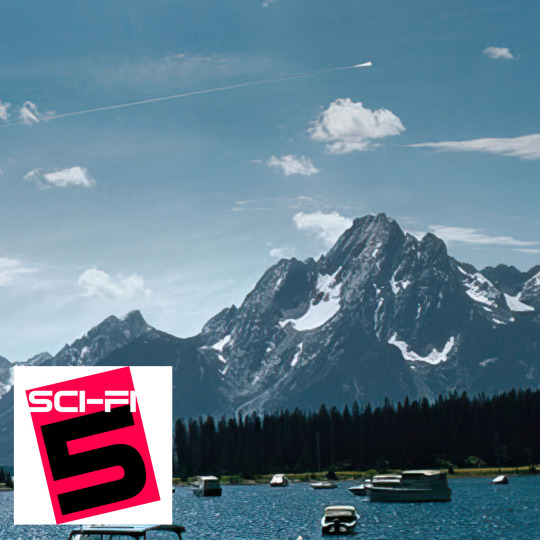
The "great daylight fireball" was a hunk of space rock that came dangerously close to the Earth on August 10, 1972. How accurate are those movies that imagine what would happen if one slammed into our home planet? Hear what the science says about science fiction and #planetarydefense on Sci-Fi 5. https://sci-fi-5.libsyn.com/a-close-call-with-us19720810-august-10-1972 Read the full article
0 notes
Text
Katyanna Quach - NASA's DART kicked up swarm of 37 boulders after Dimorphos asteroid crash:
https://www.theregister.com/2023/07/21/dart_dimorphos_ejection/
#Dimorphos #Didymos #DoubleAsteroidRedirection #AsteroidRedirection #Asteroid #DART #KineticImpactor #NASA #PlanetaryDefense #Astronomy
0 notes
Text
Every day is Asteroid Day at NASA
It’s International Asteroid Day, and today we’re talking about everything asteroids! Although there are no known threats for the next 100 years, our Planetary Defense experts are constantly finding, tracking, and monitoring near-Earth objects to protect our home planet.
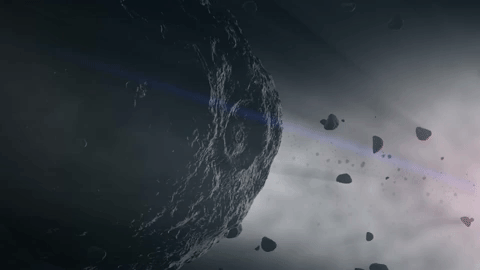
Asteroids are rocky remnants from the beginning of our solar system, and as of today, 26,110 near-Earth asteroids have been discovered!

So how do we spot these near-Earth objects? Let’s watch and see:
youtube
In addition to tracking and monitoring asteroids, we are also launching several missions to study these rocky relics. By studying asteroids, we can better understand the formation of our solar system. Here are some exciting missions you can look forward to:
OSIRIS-REx: Returning a Sample from Asteroid Bennu
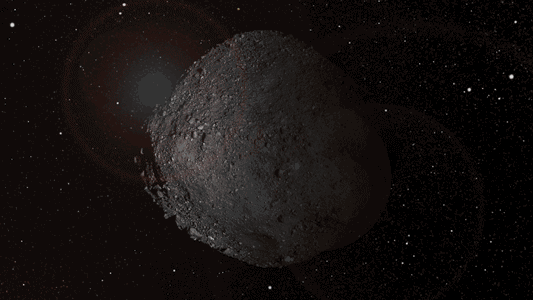
Last year, our OSIRIS-REx mission successfully captured a sample of asteroid Bennu, a 4.5-billion-year-old asteroid the size of the empire state building.
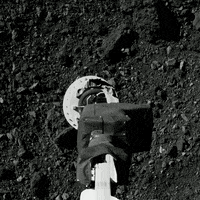
Currently, OSISRIS-REx is making its long journey home carrying this sample as it returns to Earth in 2023.
Psyche: A Journey to a Metal World
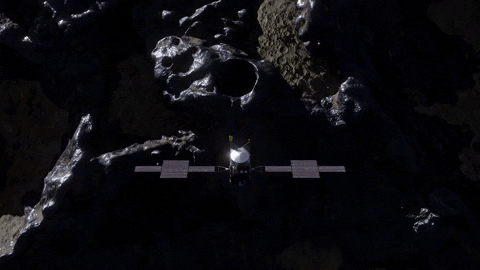
Our Psyche mission will journey to a unique metal asteroid orbiting the Sun between Jupiter and Mars.

What makes the asteroid Psyche unique is that it appears to be the exposed nickel-iron core of an early planet, one of the building blocks of our solar system. Deep within rocky, terrestrial planets - including Earth - scientists infer the presence of metallic cores, but these lie unreachably far below the planets' rocky mantles and crusts. Because we cannot see or measure Earth's core directly, Psyche offers a unique window into the violent history of collisions and accretion that created terrestrial planets.
Lucy: Studying the Trojan Asteroids
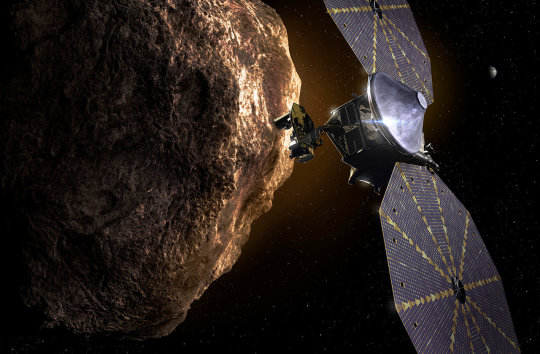
Launching this year, our Lucy mission will be the first mission to study the Trojans, a group of asteroids that share Jupiter’s orbit around the Sun. Time capsules from the birth of our Solar System more than 4 billion years ago, the swarms of Trojan asteroids associated with Jupiter are thought to be remnants of the primordial material that formed the outer planets.
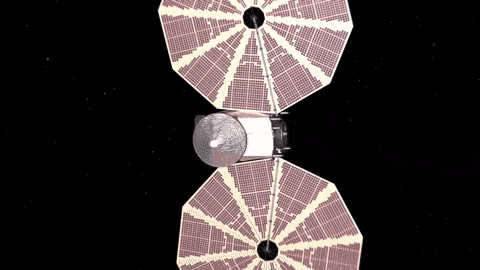
The mission takes its name from the fossilized human ancestor (called “Lucy” by her discoverers) whose skeleton provided unique insight into humanity's evolution. Likewise, the Lucy mission will revolutionize our knowledge of planetary origins and the formation of the solar system.
DART: Double Asteroid Redirection Test

Launching this year, our DART mission is a planetary defense driven test of technologies and will be the first demonstration of a technique to change the motion of an asteroid in space.
The destination of this mission is the small asteroid Dimorphos, which orbits slowly around its larger companion Didymos. Dimorphos is referred to as a moonlet since it orbits a larger asteroid.
The DART spacecraft will achieve the kinetic impact deflection by deliberately crashing itself into the moonlet. The collision will change the speed of the moonlet in its orbit around the main body by a fraction of one percent, but this will change the orbital period of the moonlet by several minutes - enough to be observed and measured using telescopes on Earth.
At NASA, every day is asteroid day, as we have missions exploring these time capsules of our solar system and surveying the sky daily to find potential hazards. We, along with our partners are watching the skies 24/7/365, so rest assured! We're always looking up.
Make sure to follow us on Tumblr for your regular dose of space!
#AsteroidDay#PlanetaryDefense#MissionToPsyche#LucyMission#DARTMission#OSIRISREx#ToBennuAndBack#space#solarsystem#science#asteroid#technology#Earth
2K notes
·
View notes
Photo

Aaand…Part 2 of my #nasasocial experience has landed! (see what I did there? 😄) click the link in my bio to see the folks I met and the things we saw. I encourage you to apply to attend a future event! #DARTMission #planetarydefense https://www.instagram.com/p/CjTKZz0ubGx/?igshid=NGJjMDIxMWI=
0 notes
Photo
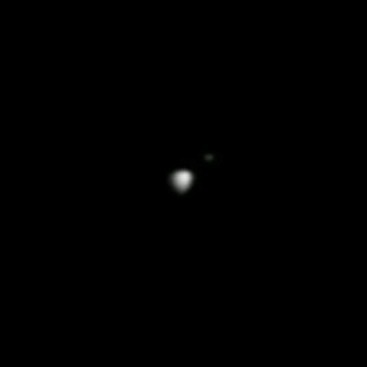
In 20 minutes, we avenge the dinosaurs (kidding). Watch the mission in real-time via NASA Live! #DARTMission #Dimorphos #PlanetaryDefense #Asteroids https://www.instagram.com/p/Ci_MXlUuL89/?igshid=NGJjMDIxMWI=
0 notes
Photo
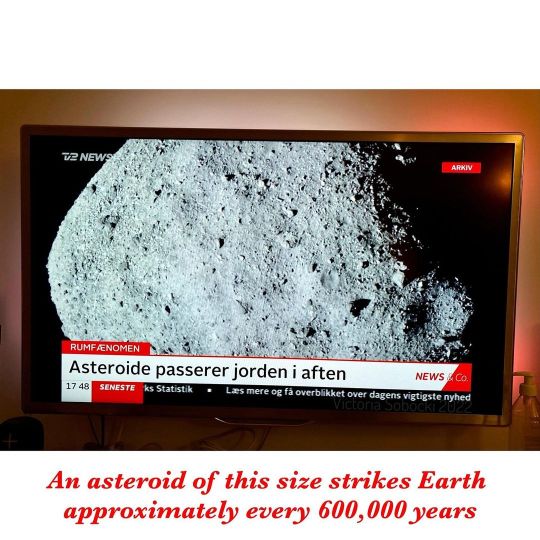
Don’t Look Up? 🤫☄️ A rare phenomenon happens tonight! “A large stony asteroid will safely pass Earth on January 18, 2022. Its estimated size is around 3,280 feet (about 1 km or .6 of a mile), around 2 1/2 times the height of the Empire State Building. As you can see from this asteroid’s label – (7482) 1994 PC1 – we’ve known about it since 1994. It is classified as a Potentially Hazardous Asteroid due to its size and relatively close flybys of our planet. An asteroid of this size strikes Earth approximately every 600,000 years.” Near-Earth asteroid 1994 PC1 (~1 km wide) is very well known and has been studied for decades by our #PlanetaryDefense experts. Rest assured, 1994 PC1 will safely fly past our planet 1.2 million miles away next Tues., Jan. 18. Track it yourself here: https://eyes.nasa.gov/apps/asteroids/ Live video: https://www.youtube.com/watch?v=xLrj1xa43pw Text source: https://earthsky.org/space/asteroid-1994-pc1-closest-jan-18-2022/ . . . . . . . . . . . . . . #asteroid1994PC1 #asteroid #NASA #planet #space #outerspace #gravity #spacetime #telescope #TV #RobertMcNaught #AsteroidWatch #xrisk #existentialrisk #governance #curious #1994PC1 #astronomer #astronomy #universe #interesting #science #nature #Denmark #curiosity #DontLookUp #McNaught #unique #cosmos (at Outer Space) https://www.instagram.com/p/CY4wYvqsVSN/?utm_medium=tumblr
#planetarydefense#asteroid1994pc1#asteroid#nasa#planet#space#outerspace#gravity#spacetime#telescope#tv#robertmcnaught#asteroidwatch#xrisk#existentialrisk#governance#curious#1994pc1#astronomer#astronomy#universe#interesting#science#nature#denmark#curiosity#dontlookup#mcnaught#unique#cosmos
0 notes
Text
(2021 October 20) Poetry of the Night: A Nightwatchman’s Journey, by Dr. David Levy

AIAA LA-LV Section (Town Hall) e-Meeting (on Zoom) Wednesday, October 20, 2021, 7 PM PDT (US/Canada) Poetry of the Night: A Nightwatchman’s Journey, by Dr. David Levy YouTube AIAA LA-LV Channel: https://www.youtube.com/channel/UCCJrx_vB7oxnU6T1yinEapg Video Recording on YouTube: https://youtu.be/kJZsigLEbaA Event RSVP and Information Page: https://conta.cc/3DdkUmp ————————————————————- AIAA LA-LV Podcasts (audio): (also see the audio recording upload below) https://rss.com/podcasts/aiaa-losangeles-lasvegas/301705/ (This event) https://rss.com/podcasts/aiaa-losangeles-lasvegas/ https://podcasts.google.com/feed/aHR0cHM6Ly9tZWRpYS5yc3MuY29tL2FpYWEtbG9zYW5nZWxlcy1sYXN2ZWdhcy9mZWVkLnhtbA ————————————————————- Event Calendar http://events.r20.constantcontact.com/calendar/monthview?eso=0010gqoU-_jblZTmCh7qkkm8w%3D%3D&llr=p9tbt6cab Join Mailing List https://lp.constantcontactpages.com/su/FnG0zoy Upcoming Events https://aiaa-lalv.org/events Join AIAA Membership https://aiaa.org/membership AIAA LA-LV and AIAA Websites https://www.aiaa-lalv.org/ https://aiaa-lalv.org/events https://engage.aiaa.org/losangeles-lasvegas https://engage.aiaa.org AIAA LA LV 2021 October 20 Poetry of the Night A Nightwatchman Journey by Dr David H Levy AIAA LA LV 2021 October 20 Poetry of the Night A Nightwatchman Journey by Dr David H Levy.mp3 Read the full article
#Aerospace#AIAA#Comet#Dr.DavidH.Levy#EnglishLiterature#Impact#Jupiter#LasVegas#LosAngeles#PlanetaryDefense#Poetry#Shakespeare#Shoemaker-Levy9#Space
0 notes
Text

Planetary science program content
#Planetaryscienceresearch#Planetarydefense#Lunar#discovery and exploration of the solar system#new frontiers#mars exploration#outer planets#oceanworlds
0 notes
Video
youtube
Collision Alert: Apophis Asteroid Could Hit Earth in 2029
Ever wondered about the asteroid Apophis and its potential impact on Earth? 🌍 Join us as we dive into the discovery of this city-killer asteroid found in 2004 and explore the European Space Agency's groundbreaking Ramses mission, set to launch in 2028. 🚀 Learn about the critical international collaboration between ESA and NASA aimed at bolstering our planetary defense capabilities. This video is a must-watch for space enthusiasts and anyone interested in protecting our planet from potential cosmic threats. Don't forget to like and share this video! #apophis #planetarydefense #ESA #NASA #SpaceMission #asteroids#Sciencefather#ScienceConference#AcademicConference#InnovationInScience#ResearchPresentation
International Young Scientist Awards
Website link: youngscientistawards.com
Nomination Link: https://youngscientistawards.com/award-nomination/?ecategory=Awards&rcategory=Awardee
Contact Us: [email protected]
Social Media:
Twitter : https://twitter.com/youngsc06963908
Linkedin- : https://www.linkedin.com/in/shravya-r...
Pinterest : https://in.pinterest.com/youngscienti...
Blog : https://youngscientistaward.blogspot....
Tumblr : https://www.tumblr.com/blog/shravya9
0 notes
Photo
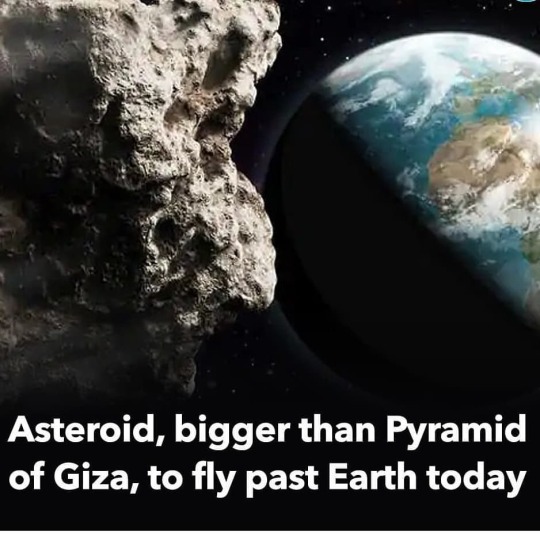
#Stargazers will be part of an exciting #celestial moment as an #asteroid will pass by #Earth on September 6. Asteroid (465824) 2010 FR is between 120-270 metres long and could be bigger than the #Pyramid of #Giza in Egypt. The asteroid will be 7.5 million kilometres from us but the National Aeronautics and Space Administration’s (#Nasa’s) Asteroid Watch has debunked theories that it might be close enough to cause significant damage. “Our #PlanetaryDefense experts are not worried about asteroid 2010 FR and you shouldn’t be either because it has zero chance of hitting Earth. Earth globe #americas It will safely pass by our #planet on Sept. 6 more than 4.6 million miles away—that’s more than 19 times the distance of our #Moon!” Asteroid Watch tweeted. The virtual #telescope project initiative also said on their website that despite its size, the asteroid will not be able to cause any damage and people will be safe. Tap the link in bio to read more. #asteroids #spacewatch #earthplanet #SpaceScience #nasa🚀 #Universe #StaySafe #spacefacts #SpaceResearch #Science #astrophysics #physicsfun Reposted from @hindustantimes https://www.instagram.com/p/CEytGmmBDmo/?igshid=nc6tpyy2mxo4
#stargazers#celestial#asteroid#earth#pyramid#giza#nasa#planetarydefense#americas#planet#moon#telescope#asteroids#spacewatch#earthplanet#spacescience#nasa🚀#universe#staysafe#spacefacts#spaceresearch#science#astrophysics#physicsfun
0 notes
Photo
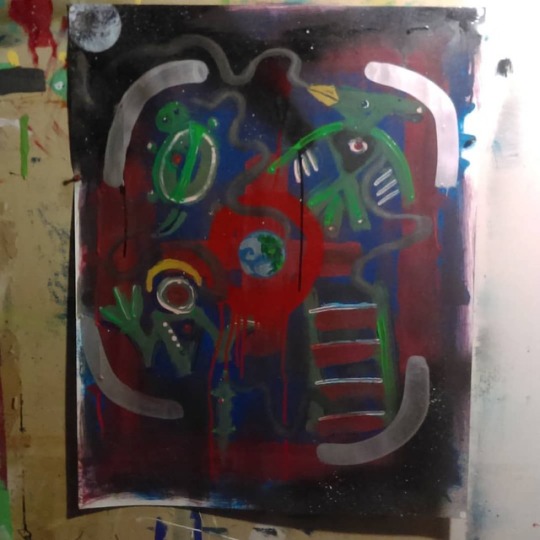
Current iteration of #PictographsPlayZoneForEarth #pencil #spraypaint and #acrylic #painting on #paper. #Ottawa #planetarydefense #art #pictographs #earth #powerlines #NeoWoodlands (at Kanata, Ontario) https://www.instagram.com/p/BsmwKpwFdca/?utm_source=ig_tumblr_share&igshid=1exa09pofelp3
#pictographsplayzoneforearth#pencil#spraypaint#acrylic#painting#paper#ottawa#planetarydefense#art#pictographs#earth#powerlines#neowoodlands
0 notes